#6: Ghosts Of Airports Future
Ed Jefferson is attempting to visit every Mews in Greater London. This week: restraining orders, George Orwell, and marrows, but first…
Although the places we live, work, or otherwise spend time in obviously aren’t intrinsically any more important the ones we don’t, I do find something slightly eerie about realising a place of (even moderate) significance from my past has disappeared - like a thread has been cut, putting whatever moments that I associated with that place even more out of reach than they were anyway because I’m not magic.
For most of us this is at least a somewhat slow process, things get knocked down, things get built on, eventually you find yourself telling someone something to the effect that ‘this were all fields’ as though that is going to be interesting to anyone else but you. But it isn’t always.
On 31st Janaury 1953 the village of Creekmouth in Barking was hit with the North Sea Flood. Whilst it wasn’t literally washed away, the damage resulting from being covered in 3 feet of water and sewage was effectively terminal and the entire village was demolished not long afterwards. If you can brave the industrially unpleasant surroundings, the site, now Creekmouth Open Space, is a nature reserve of sorts from which you can, ironically, get a good view of the Barking flood barrier1. There were no deaths when Creekmouth flooded, so any ghosts are 100% metaphorical, but is definitely strange to stand somewhere that was a real place with people living their real lives, that effectively just blipped off the map one day.
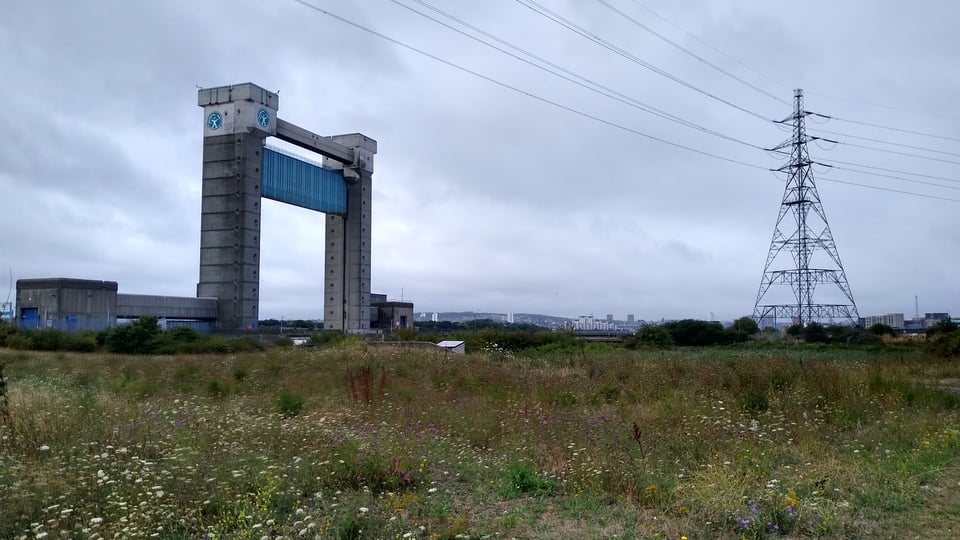
The creek of Creekmouth is Barking Creek, which is actually the end of the River Roding, and curiously enough a village right at the other end of the river was threatened with a similar level of obliteration, albeit for somewhat different reasons. Molehill Green, where the river rises from a spring, is next door to Stansted Airport, which, having experienced rapid growth since the late 1990s, was by 2008 proposing to add a new runway, right over the top of the village. Though this did not in the end happen, it caused years of turmoil, especially as the airport authority had already bought up a significant portion of the village (including the pub) in preparation - nothing got knocked down, but the community took a hit either way.
And it’s not just Stansted’s neighbours who’ve had cause to worry - I was Mews-hunting down in Hillingdon the other day and encountered ‘Stop Heathrow Expansion’ signs, which are actually fairly undramatic considering they’re referring to what is a reasonably existential threat - much of my walk that morning would, if the expansion had already happened, been straight down the middle of the mooted third runway.
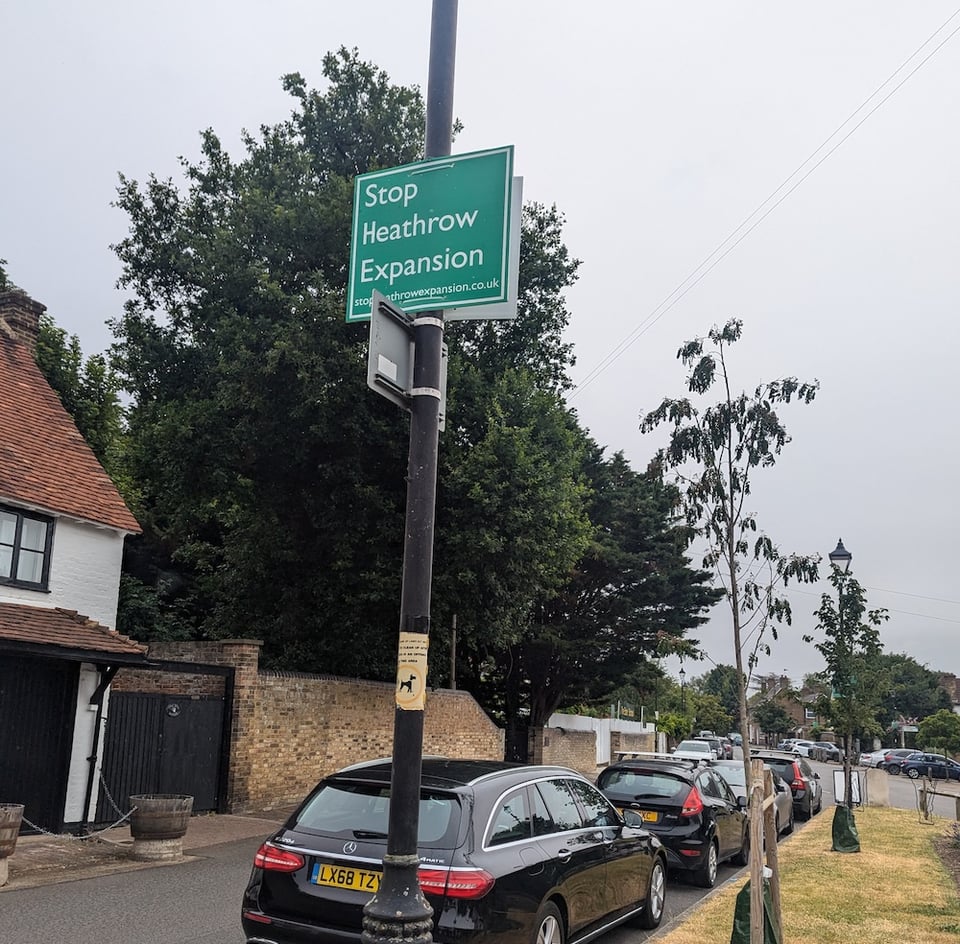
I don’t, in principle, object to these sort of large scale infrastructure projects wiping places off the map, which might sound a bit harsh, but it is an unfortunate reality that sometimes people are going to be living on top of a bit of land which the rest of society needs to be doing something else instead. Obviously whether that trade off is worthwhile or justified is going to very much depend on the merits of each case, but sometimes it will be.
But even then it’s hard not to have sympathy for those involved (although I like the guy I found quoted in a local paper who said something to the effect of “Yes please compulsorily purchase my house as soon as possible so I can move to Spain.”) - especially given how long these processes drag on - the fight over Heathrow’s expansion has been going for nearly 20 years at this point. And if it happens, it is more than just being forced to move, there’s a different sort of finality to it, a severing of connections, of your history with a place. You can't go home again - especially if an Easyjet flight to Alicante is taking off from your living room.
MEWSES VISITED THIS WEEK
#51 Beaudesert Mews, Hillingdon, UB7
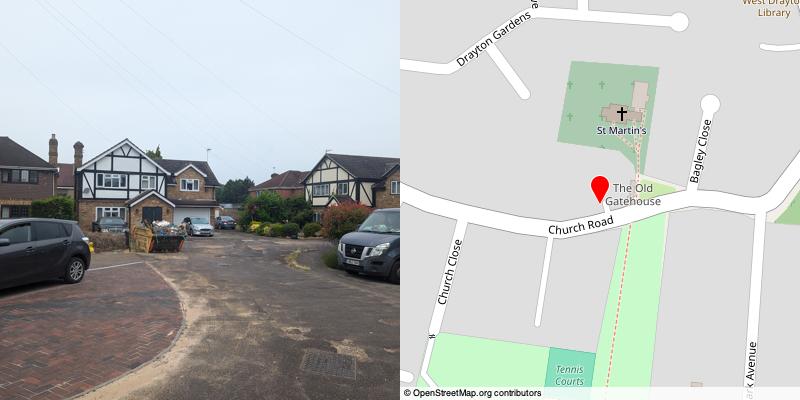
Built on the site of the local manor house, at which Elizabeth I was once “entertained” (it says here), but which was demolished for reasons unknown in the 18th century. For many years after there was a nursery here (plants not children) - when the housing development was proposed in the early ‘80s some archeology was done revealing neolithic pottery and 2899 mammal bones (mostly ox) believed to have been left behind by the various occupants after (presumably) eating the mammals.
The gatehouse and some of the walls of the manor house remain, and the Mews’ history was unintentionally memorialised in 1986 when a resident won a ‘Lady of the Manor’ fashion contest at a Butlins.
#52 Acacia Mews, Hillingdon, UB7
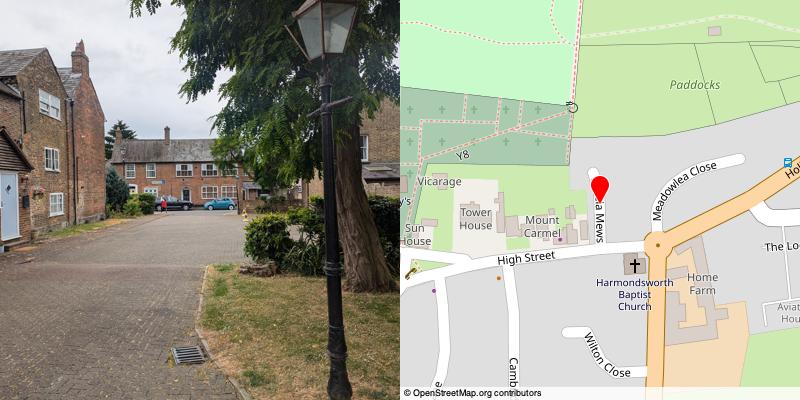
MEWS AT RISK. The proposed third runway for Heathrow airport (see above) would run just south of the High Street in Harmondsworth, and while it wouldn’t require the demolition of Acacia Mews, campaigners say it would effectively be uninhabitable due to noise and pollution. Still, you’d get quite a good view if you like planespotting, so there is that.
#53 Copthorne Mews, Hillingdon, UB3

Infill housing that replaced garages at some point in the 1980s - seems to have had a somewhat troubled existence over the years judging by the local newspaper. In 1991, a resident’s letter bemoans illegal parking, unbagged rubbish and worst of all noisy children, ominously concluding:
“This is intended as a friendly letter, but if the situations continue things will not stay that way.”
Apparently this threat didn’t help - in the following years it seems to have become a bit of a hotspot for bored youth looking for somewhere to get pissed (or worse), and it got so bad at one point the Resident’s Association had to get a restraining order taken out on one particularly difficult character who wouldn’t stop bothering them.
No illegal partytime that I could observe on my visit, unless kids are really into fly-tipping broken ironing boards these days.
#54 Butchers Mews, Hillingdon, UB3

The reasoning behind road names is often a bit lost to time (and I suspect more of then not is a bit arbitrary), so I was delighted to learn that this is called Butchers Mews because it backs on to a house that used to be a butchers shop. They could have named it after what was actually on this bit of land in particular, but maybe they thought that no-one would want to live on Abatoir Mews for some reason.
#55 Sherfield Mews, Hillingdon, UB3
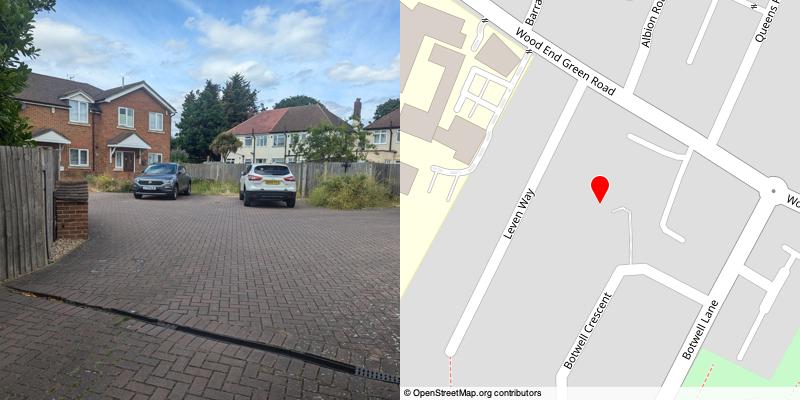
More infill replacing garages, just off Botwell Crescent, “the finest home propositions ever put before you” according to the original ads when the estate came on the market in 1934.
This was around the time George Orwell was living in the area (Hayes) that he described as “one of the most godforsaken places I have ever struck”. To be fair to Hayes they rolled with the punches on that one and seem quite proud of it - they cheerfully quote it in council documents and they’ve given him a blue plaque and everything.
#56 Chalfont Mews, Hillingdon, UB10

Builder’s yard turned gated development. I really hope that the builder’s yard was being used by the builders to build the houses, gradually building itself out of existence.
#57 Holly Cottage Mews, Hillingdon, UB8
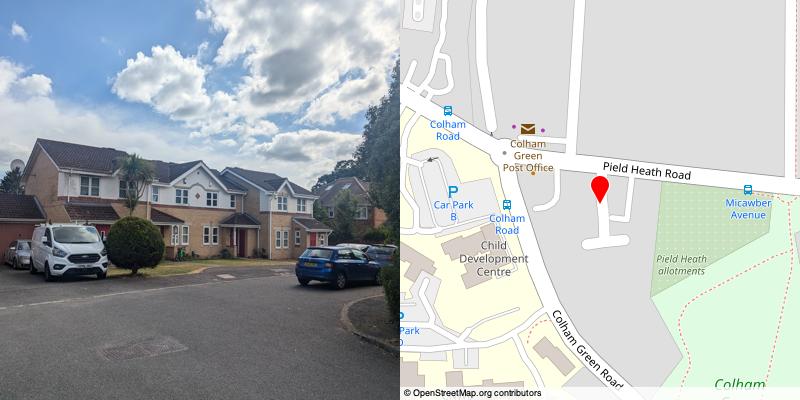
Why not celebrate the new year by buying a house, suggests the Barrett Homes advert for this estate in 1996? But Barrett Homes, I have only just bought a house to celebrate Guy Fawkes night!
#58 Triangle Mews, Hillingdon, UB7
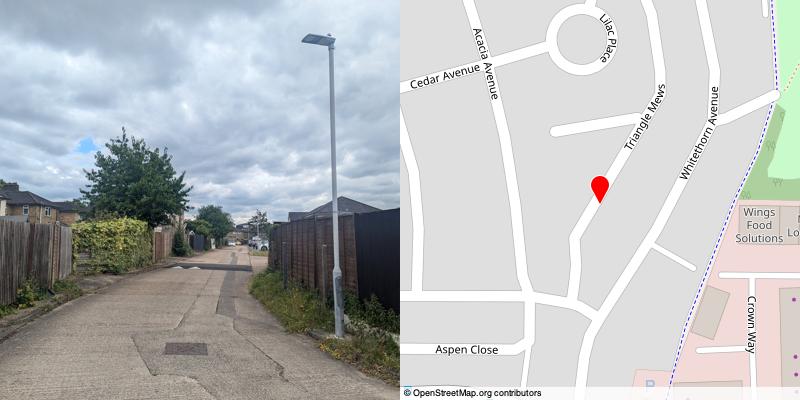
Do you not really understand what a triangle is? Why not be in charge of naming a mews that’s being built as infill development on a housing estate in West Drayton?
#59 Merrivale Mews, Hillingdon, UB7
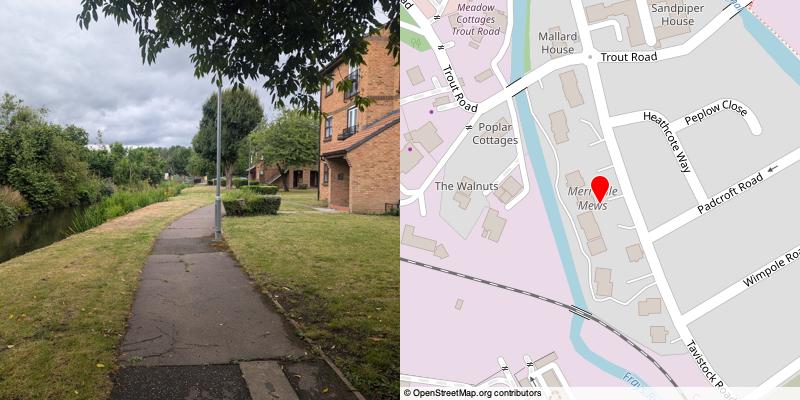
A lesser-spotted riverside mews, built by Wimpey in 1986 over what had until the 1960s been a branch railway line running between Uxbridge and West Drayton that had by that stage been fairly redundant for years given Uxbridgeans had two different tube lines to choose from. Who needs a train that doesn’t even know how to go underground?
Shortly after the railway closed to passengers an episode of a UK/US coproduced World War II drama called ‘Court Martial’ was filmed at the defunct Cowley station, just north of here. It guest-starred Donald Sutherland as a corporal who crashes a jeep. RIP.
#60 Belgrave Mews, Hillingdon, UB7
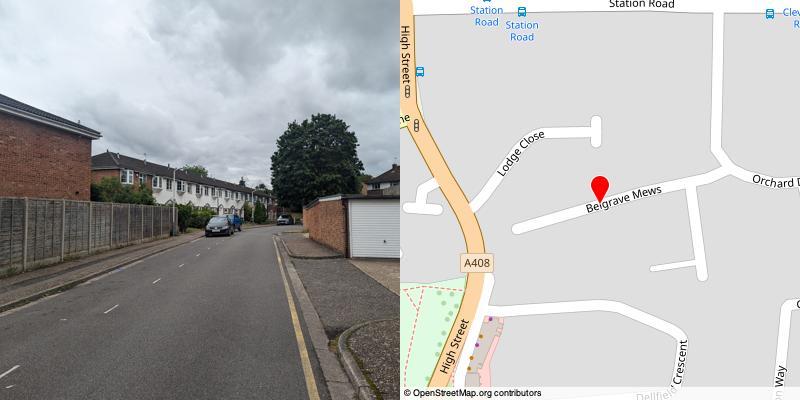
Do you live in Cowley and love allotments? Sucks to be you, because they built Belgrave Mews on top of the allotments. Building on allotment land is a somewhat controversial topic these days - allotments are often in places that need to build homes, but there’s consequently a shrinking supply of them which in turn means demand rises.
Personally I’m normal and prefer to buy my food from the supermarket instead of ‘growing marrows’ or whatever, and also I live on what was once an allotment2 so it would be a bit hypocritical for me to get upset about building on them, but last time I checked there were still loads of golf courses we could be building houses on instead?
Total mewses visited: 60/2380
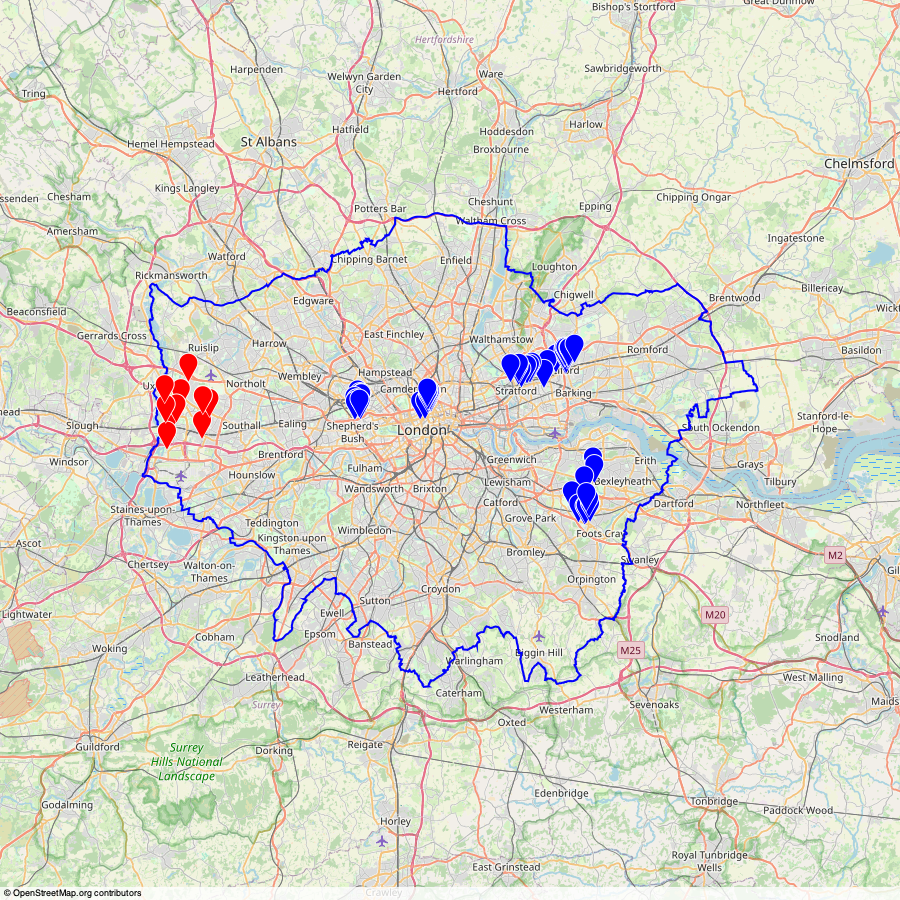
According to some Google reviews it might currently be closed, so don’t blame me if you trudge all the way there and can’t get in.
In a building that someone built on it, obviously, although the is a weird London housing crisis subplot where people with allotments appear to be attempting to live on them.
Add a comment: